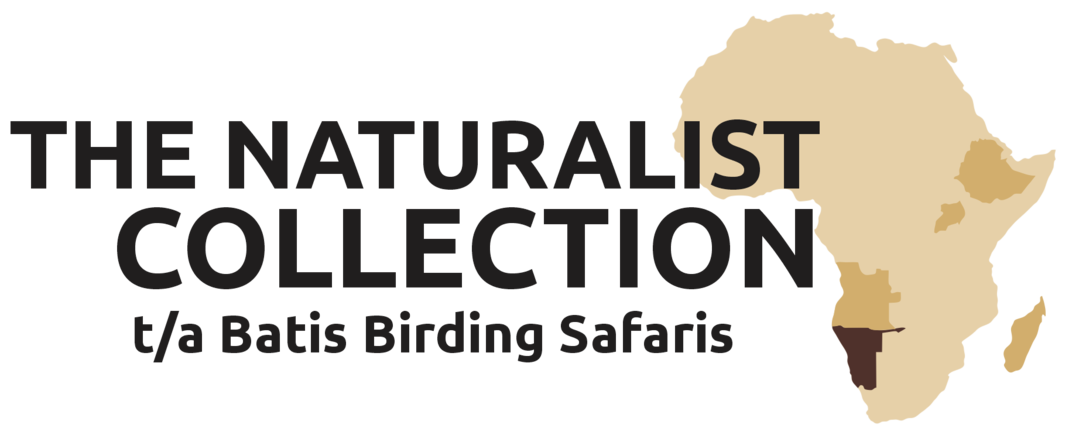Our guide will collect us at the airport and transfer us to the hotel. Depending on the time of arrival we will head to Lac Alarobia offering some local wetland birding. This RAMSAR site is located in the middle of the city and his home to 14 threatened and endemic bird species such as the Madagascar Pond Heron, Meller's Duck and Madagascar Grebe. Other species we will be looking out for include Hottentot Teal, Red- billed Teal, White-faced Whistling Duck, Knob-billed Duck, Dimorphic Egret, Squacco Heron, Madagascar Wagtail, Madagascar Coucal, Mascarene Martin, Madagascar Kestrel, Red Fody, Madagascar Black Swift, Madagascar White-eye and Madagascar Mannikin.
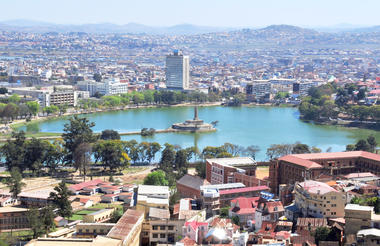
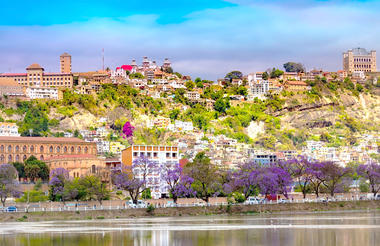
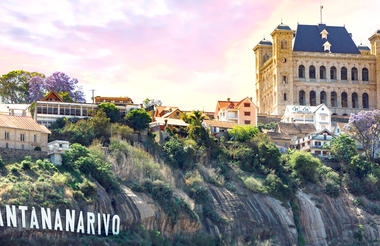
Airport transfer
Dinner
After breakfast we leave behind the bustling city of Antananarivo and continue with a 4 hour drive to Andasibe National Park, the kingdom of lemurs. We will stop en-route for a short visit to the “Peyrieras Private Reserve”. Here they boast an impressive collection of reptiles, amphibians and butterflies.
Upon arrival in Andasibe we will check into our hotel and enjoy the afternoon at leisure. Before dinner we will do an evening night walk to spot nocturnal lemurs, birds, geckos and chameleons with the local guide. Some of the nocturnal lemurs we will be looking out for include the diminutive Goodman’s Mouse Lemur, Eastern Woolly Lemur, Greater Sportive Lemur, Hairy-eared Dwarf Lemur and Crossley’s Dwarf Lemur.



Breakfast & dinner
All entrance fees, local guides & activities as per itinerary
After an early breakfast we will head into the park where we will spend the day exploring.
Andasibe-Mantadia National Park is a 155 square kilometre protected area, consisting principally of primary growth. This rain forest provides habitat to a vast biodiversity, including many endemic and rare and endangered species.
The extraordinary animal diversity is completed with 15 mammal species, more than 100 species of birds, 50 species of reptiles and more than 80 species of amphibians. There are also a few local endemic fish in the small rivers and hundreds of insects, among them some extraordinary colourful butterflies.
Andasibe is home to many species of lemurs, including the largest of them all, the Indri. Others include Diademed Sifaka, Black and White Ruffed Lemur, Greater Bamboo Lemur, Lesser Bamboo Lemur and Common Brown Lemur.
Bird species that are regularly encountered include Madagascar Starling, Madagascar Blue Pigeon, Madagascar Pygmy Kingfisher, Greater Vasa Parrot, Ward’s Flycatcher, Madagascar Paradise Flycatcher, Madagascar Cuckooshrike, Spectacled Tetraka, White-throated Oxylabes, Nelicourvi Weaver, Souimanga Sunbird, Madagascar Spinetail, Long-billed Bernieria, Red-fronted and Blue Couas, Common and Green Jerys and the bizarre looking Cuckoo-Roller. Several species of Vangas occur here including Blue, Rufous, Chabert's, Pollen's and Hook-billed.
Before dinner we will embark on another night walk in search of nocturnal delights.
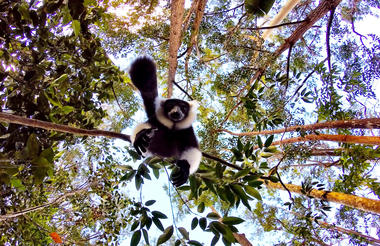
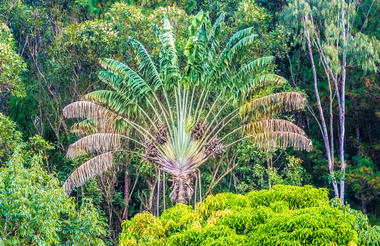
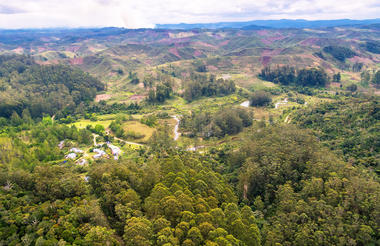
Breakfast & dinner
Entrance fees, local guides & activities as per itinerary
We will spend the morning in the park catching up with some missed species before heading back to Tana.
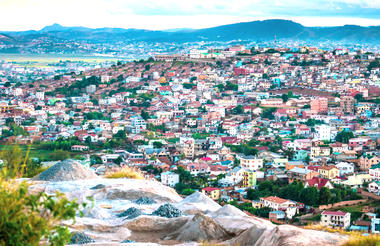
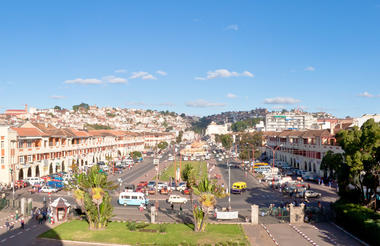
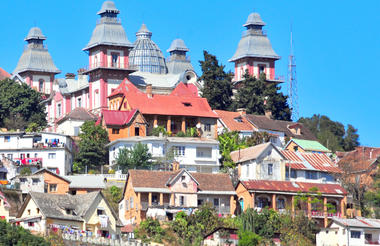
Breakfast & dinner
Entrance fees, local guides & activities as per itinerary
Early morning we will visit the Lemur Park before continuing to the airport where we will catch our flight to Fort Dauphin. The Lemur’s Park is a small botanical garden and Lemur reserve covering 5 ha. The Lemurs move around freely. Due to food supply and habitat shortage they do not venture far from the reserve. Most of them have been saved from pet owners and have been rehabilitated. Great photographic opportunities. Chances of a few Chameleon species in the area as well as birding opportunities in the park might provide a few surprises.
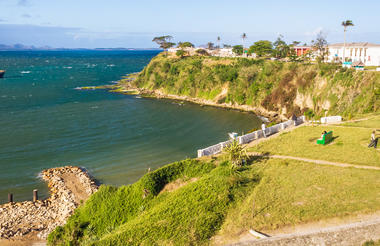

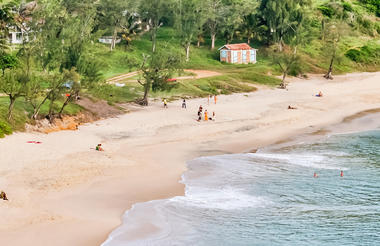
Breakfast & dinner
Entrance fees & local guides
Internal flight
After breakfast we take the 3 hour drive to the exciting Berenty Reserve stopping en-route to view the unique baobab trees and the rare three-cornered palms.
Berenty Reserve was created to protect lemurs and their natural environment with one of the last gallery forests in Madagascar dominated by tamarind trees and the spiny dry forest.
This private reserve is a sanctuary for approximately 2 000 lemurs who live there freely. Ring-tailed lemurs generally give birth in September/October and we will have the opportunity to photograph them as well as the 'dancing' Verreaux's sifakas at close range.
You can also look forward to seeing some of the 102 species of birds that occur here, including Hook-billed Vanga, Madagascan Cuckoo-shrike, Madagascar Magpie-robin, Madagascar Hoopoe, Madagascar Paradise Flycatcher, Madagascar Sandgrouse, Madagascar Buttonquail, Madagascar Cuckoo-Hawk, Frances’s Sparrowhawk, Madagascar Sparrowhawk, Madagascar Harrier-hawk, Grey-headed Lovebird and Giant Coua.
The Mammals present include Lesser Hedgehog Tenrec, Small Indian Civet as well as the south’s largest Madagascar fruit Bat colony.
Reptiles are plentiful and we have good chances of seeing Radiated and Spider Tortoise, Dumeril's Boa, Warty Chameleon, Jeweled Chameleon, Big-headed Gecko, Plated Lizard and the Near-limbless Lizard.
The night walks are normally productive and should produce White-Footed Sportive Lemur, the Gray Mouse Lemur, and the Reddish-gray Mouse Lemur. We will also hope to catch up with White- browed Hawk-Owl and Torotoroka Scops Owl.


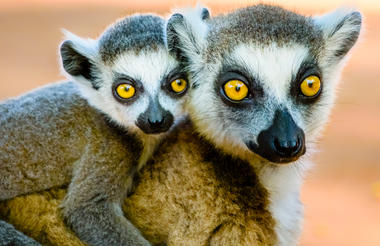
Breakfast & dinner
Entrance fees, local guides & activities as per itinerary
We will spend another day at Berenty exploring the wonderful fauna and flora. Another night walk will hopefully produce species we might have missed out on the previous night walk.


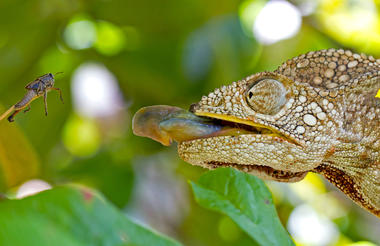
Breakfast & dinner
Entrance fees, local guides & activities as per itinerary
Today we will travel back to Fort Dauphin to catch our flight to Tulear followed by a short drive to Ifaty. The afternoon can be enjoyed at leisure at our beach side resort.
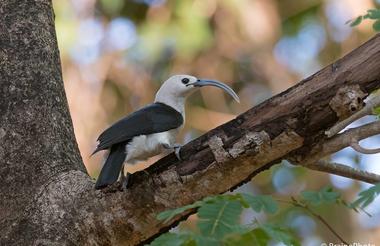
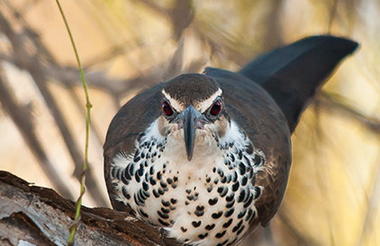

Breakfast & dinner
Internal flight
We will have a pre-dawn start today to Ifaty's spiny forest. This area is of great interest to birdwatchers and succulent enthusiasts. An early morning birding walk should produce the rare and endangered Long-tailed Ground-roller and Subdesert Mesite. Other specials that occur here include Lafresnaye's and Sickle-billed Vanga, Banded Kestrel, Archbold's Newtonia, Thamnornis Warbler, Subdesert Brush Warbler as well as Olive-capped and Running Coua.
We will spend some time in this forest made up of some of the most bizarre flora imaginable – fascinating spiny forest of Alluadia madagascariensis in which the waving branches of devilishly-spined octopus trees contrast sharply with the squat, rounded forms of bulbous baobabs. Endemism here is very high, about 95% of the plant species are found nowhere else on earth. Reptiles to look out for will be Oustalet's and horned chameleon, spider tortoise, Dumeril's boa and big-headed geckos. En route back to the hotel we will search for Madagascar Plover as well as Kittlitz’s Plover, Greater Painted- snipe, Greater Flamingo, Black-winged Stilt, Little Bittern, White-throated Rail and Baillon’s Crake.
We will head back to our accommodation for lunch and some leisure time with beautiful views of reef protected beaches that allow for swimming and snorkelling. The beautiful gardens provide great opportunities to photograph butterflies, dragonflies and reptiles.
During the late afternoon we will venture into the surrounding areas in search of some localised endemic birds, the main targets being Red-shouldered Vanga and Verreaux’s Coua.
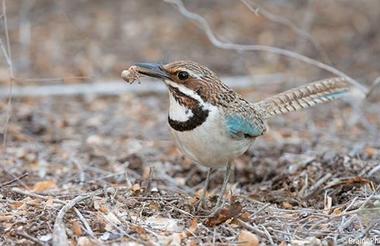


Breakfast & dinner
Entrance fees, local guides & activities as per itinerary
After an early breakfast we will drive to the port of Tulear. From here we hop onto a boat and head to the small island of Nosy Ve. En route there are good chances of seeing Humblot's Heron nesting along the cliff faces.
This small, uninhabited coral island lies 3km off the west coast. Local fady (taboos) have left Nosy Ve unspoiled and provide a nesting safe haven for many Red-tailed Tropicbirds. The island is not only good for birding but provides excellent snorkelling opportunities. Other birds that we may encounter here include Lesser Crested and Saunder’s Tern, Crab Plover and Bar-tailed Godwit.
From there we will continue to Anakou for lunch while keeping a lookout for the Littoral Rock Thrush. After lunch we head to our accommodation in Tulear. The afternoon we may catch up on species missed the previous day.



Breakfast & dinner
Boat cruise to Nosy Ve
Today we will head to the magnificent Isalo National Park. En-route we will stop and visit Zombitse National Park. Together with the adjacent forests of Vohibasia, Zombitse constitutes the last - and therefore biologically significant - remnant of transition forest between the western and southern regions. This park is of particular interest to birdwatchers, being home to one of the country’s rarest localised endemics, the Appert’s Tetraka.
Other species that can be found here include Crested and Giant Couas, Cuckoo Rollers, Madagascar Cuckooshrike, Madagascar Harrier-Hawk, Long-billed Bernieria, Madagascar Paradise Flycatcher and Madagascar Spinetail. Vangas to be found include Blue, Rufous and Red-tailed. With a massive amount of luck we might even see Madagascar Ibis.
Mammals that occur here include Verraux’s Sifaka, Ring-tailed Lemur, Red- fronted Brown Lemur, Hubbard’s Sportive Lemur, Pale Fork-marked Lemur, Coquerel’s Giant Dwarf Lemur, Fat-tailed Dwarf Lemur, Grey Mouse Lemur, Fosa, Greater Hedgehog Tenrec, Large-eared Tenrec and Western Big- footed Mouse.
Reptiles are also plentiful here and include the locally endemic Standing’s day Gecko, Oustalet’s chameleon, Dumeril’s boa and Giant hog-nosed Snake.
After our picnic lunch we will continue to Isalo National Park. Isalo is quite unlike any other place in Madagascar. Its appeal is the remarkable landscape of eroded ruiniform sandstone outcrops, canyons and rare plants. The morning and evening light is often spectacular making this an attractive place for photographers. The park covers 81,500ha of the Isalo Massif, which rises majestically from the surrounding flat grassy plain. The sandstone has been eroded into weird shapes, cut through by impressive gorges. Vegetation is concentrated in the bottom of the canyons where there are flowing streams providing much needed moisture for flora and fauna alike.
The area has a special interest with botanists as there are Pachypodium species and locally endemic Aloes.
Notable mammals include Sifakas, Red-fronted brown Lemurs and Ring-Tailed Lemurs.
On the birding front we can expect to find Benson’s Rock-thrush, White-throated Rail, Madagascar Cuckoo-roller, Madagascar Coucal, Madagascar Wagtail, Madagascar Kestrel, Madagascar Hoopoe, Madagasacar Cuckoo, Madagascar Lark, Madagascar Cisticola and Bat Hawk.
After check-in we will embark on an afternoon walk to see what new species we can find.
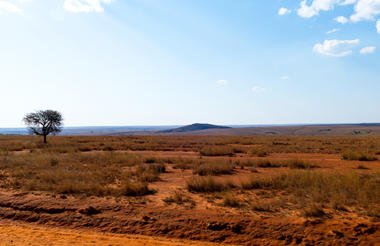


Breakfast & dinner
Entrance fees, local guide & activities as per itinerary
Today is mainly a travel day. Along the way we will do a short walk through the small, locally managed, Anja Community Reserve. This reserve is in a woodland area with a nearby freshwater lake, situated at the base of a large cliff. It has a thriving population of Ring-tailed Lemurs. The walk will take us along some impressive rocks formations.
If time allows we will also stop in the towns of Fianarantsoa and Ambalavao, where we can visit small ‘factories’ where the locals hand produce anything and everything from paper to aluminium pots to silk scarves and hand-stitched fabrics.
Upon arrival at Ranomafana we will check into our hotel and embark on a night walk before dinner.



Breakfast & dinner
Entrance fees, local guide & activities as per itinerary
Finally, the day has arrived to explore Ranomafana National Park.
With more than 41,600 hectares of tropical rainforest, Ranomafana is without a doubt one of the most spectacular National Parks in Madagascar. It is home to the Golden Bamboo Lemur, Eastern Woolly Lemur, Red bellied Lemur, Eastern Grey Bamboo Lemur, Greater Bamboo Lemur, Red-fronted Brown Lemur, Black-and-white Ruffed Lemur, Milne-Edward ́s Sifaka, Small-toothed Sportive Lemur, Greater dwarf Lemur, Brown Mouse Lemur and the very rare and shy Aye-aye. Other mammals include 7 species of tenrecs, 8 bats and 6 carnivores which include the Malagasy striped Civet and mongoose species. It hosts over 130 species of frogs of which some are still being described.
There are at least 115 catalogued Bird Species in Ranomafana NP (30 are locally endemic to this part of Madagascar). Of particular interest here are the Brown Mesites, Pollen’s Vanga, Blue Vanga, Common Sunbird-asity, Pitta-like Ground-roller, Short-legged Ground-roller, Rufous-headed Ground-roller, Red-fronted Coua, Collared Nightjar, Henst's Goshawk, Forest Rock-thrush, Grey-crowned Greenbul, Wedge-tailed Jery and Yellow- browed Oxylabes.
Apart from that, the immense wildlife is completed by 62 species of reptiles (chameleons, snakes and fringed and satanic leaf-tailed geckos are pretty common), 98 frogs, 90 butterflies, 350 spiders and several fish and crayfish species.
Many of the plants here are used by the Tanala and the Betsileo people for medical purposes. There are precious wood and palm trees, many orchids and carnivorous plants.
In addition to its densely forested hills, the protected area is characterised by numerous small streams, which plummet down to the beautiful Namorona River, which bisects the park and produces electricity for the surrounding areas at the hydroelectric power station of Ranomafana.
The climate is warm and humid all year. Best visiting months are May, September, October, and November.
Another night walk before dinner should produce more exciting nocturnal creatures.



Breakfast & dinner
Entrance fees, local guide & activities as per itinerary
Today will mainly be a travel day back to Tana.
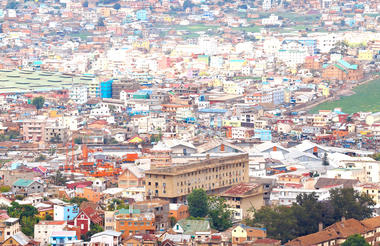
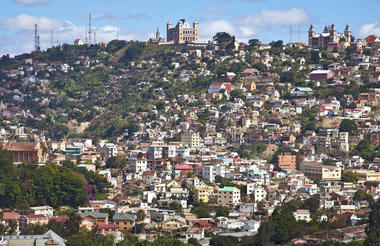
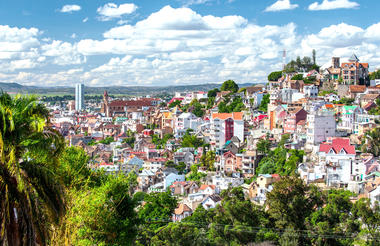
Breakfast & dinner
Depending on time of departure we may have time to visit the markets before our onward flight home / Masoala.



